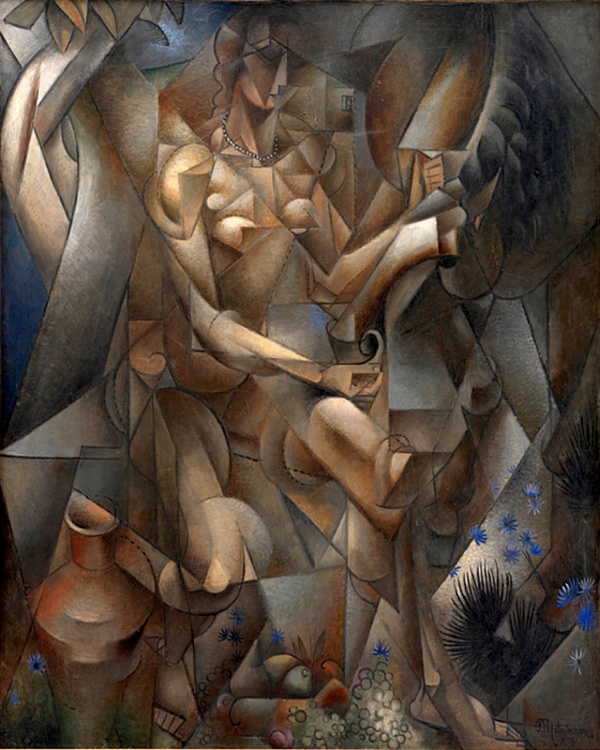Facts About La Femme au Cheval
"La Femme au Cheval" is a notable oil painting by French artist Jean Metzinger, created around 1911-1912. It garnered significant attention in the art world, being featured in several Paris exhibitions in 1912 and later appearing in Guillaume Apollinaire's book "The Cubist Painters, Aesthetic Meditations." This piece exemplifies Metzinger's Cubist style, where he deconstructs the image into facets to simultaneously present different aspects of the subject.
In the painting, a woman and a horse are depicted against a landscape, complemented by elements such as trees, a window, and a vase brimming with fruits and plants. Metzinger's deft use of color and form earned accolades from art critics like Roger Allard and André Salmon. The painting’s fragmented appearance and multiple viewpoints challenge conventional perspectives, inviting viewers to engage with it more dynamically.
Metzinger’s concept of "mobile perspective" in this work played a pivotal role in the development of Cubism and had connections to non-Euclidean geometry. His approach to depicting motion and various viewpoints on a single canvas resonated with ideas in quantum mechanics, particularly Niels Bohr's principle of complementarity. Bohr, inspired by Metzinger's methodology, applied similar concepts to his theories in quantum physics, illustrating how the observer influences reality.
Over the years, "La Femme au Cheval" has been displayed in numerous exhibitions, underscoring its enduring significance in the art world. The painting's blend of innovative techniques, geometric abstraction, and dynamic perspectives showcases Metzinger's substantial contribution to modern art and its intersections with science and philosophy.

 Germany
Germany